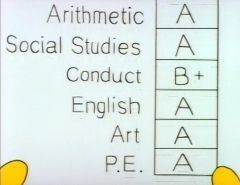ESA Space Science | LISA Pathfinder | 2015 Sep 01
[img3="LISA Pathfinder Exploded View - Credit: ESA/ATG Medialab"]http://www.esa.int/var/esa/storage/imag ... mage_2.jpg[/img3][hr][/hr]LISA Pathfinder, ESA’s demonstrator for spaceborne observations of gravitational waves, is ready to leave for Europe’s Spaceport in Kourou, French Guiana.
Scheduled for launch on a Vega rocket later this year, the spacecraft was on display today at IABG’s test centre in Ottobrunn, near Munich, Germany, where final integration and extensive tests were performed over the past few months.
This was the last chance for scientists, engineers and members of the media to see LISA Pathfinder before it is packed for shipping.
“This is an extremely challenging mission that will pave the way for future space-based projects to observe gravitational waves, opening a new window to explore the cosmos,” said Paul McNamara, ESA’s project scientist.
Gravitational waves are ripples in the fabric of spacetime produced by accelerating massive bodies, such as a pair of orbiting black holes. Predicted by Albert Einstein’s general theory of relativity in 1915, they are expected to be ubiquitous in the Universe, but have not been directly detected to date.
While ground-based searches for these elusive messengers of gravity have been under way for the past few decades, a gravitational-wave observatory in space would open up new possibilities in this quest.
LISA Pathfinder will test the fundamental technologies and instrumentation needed for such an observatory, demonstrating them for the first time in space.
“Gravitational waves are an entirely fresh and different way to study the Universe, providing an important complement to the well-established approach of astronomy, based on observing the light emitted by celestial bodies,” says Paul.
Among the anticipated sources of gravitational waves are supernova explosions and double black holes. These objects are thought to be associated with overwhelmingly powerful events. For example, the energy released in gravitational waves during the last few minutes of the merging of just one pair of supermassive black holes is comparable to the total energy emitted as light by all stars and galaxies across the cosmos over the same time.
Scientists are also looking forward to discovering even more, unexpected cosmic sources once they are able to ‘listen’ to the Universe on this new channel. ...
LISA Pathfinder on the Way to Launch
Max Planck Institute for Gravitational Physics | 2015 Sep 01


